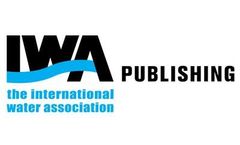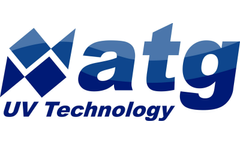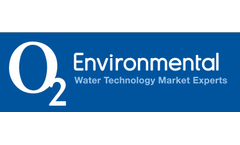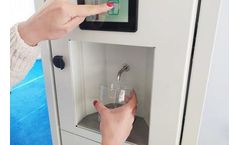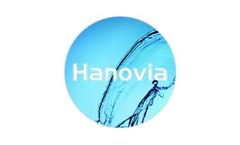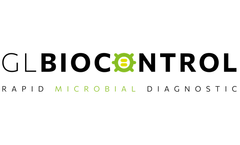drinking water UV Articles
-
Sutton and East Surrey Water - Drinking Water UV Treatment - 5000m3/hr - Case Study
atg UV Technology supplied Sutton & East Surrey Water with a US EPA UVDGM Validated solution using 3 x SX-1873-30 UV Systems. The Duty / Assist / Standby plant treats over 5,000 m3/hr of drinking water for a population of over 650,000 people, and has a redundancy of 10,000 m3/hr for future population ...
-
Rand water - Case Study
Client: Rand Water, South Africa Location: Zuurbekom, Gauteng, South Africa Description: Potable Drinking Water atg UV Technology, pioneers in the design and engineering of Ultraviolet treatment systems have supplied Rand Water, South Africa's largest supplier of potable water to the Gauteng area with a state-of-the-art compact, closed chamber, Ultraviolet disinfection system for the ...
-
Removal and degradation of glyphosate in water treatment: a review
Glyphosate is a broad spectrum, non-selective herbicide, widely used for the post-emergence control of annual and perennial weeds in a variety of applications. Although of low toxicity, its presence in drinking water is undesirable and can cause drinking water compliance failure in the EU if found at concentrations >0.1 μg L−1. Treatment methods such as ozonation and ...
-
A computational fluid dynamics analysis of placing UV reactors in series
Ultraviolet (UV) light water treatment reactors are commonly used in both wastewater and drinking water disinfection. UV technology can effectively inactivate a large number of pathogens at low UV doses, however adenovirus requires a substantially higher dose than most pathogens of interest. In order to meet adenovirus inactivation requirements, UV reactors are often placed in series and the ...
-
Method to determine the power efficiency of UV disinfection plants and its application to low pressure plants for drinking water
In this paper we present a method to determine the power efficiency of ultraviolet (UV) disinfection plants and apply this to low pressure plants for drinking water. In UV disinfection plants the water flow is regulated to ensure that microorganisms receive the necessary fluence for inactivation while passing through. The flow depends on the UV transmission (UVT) of the water. The lower the ...
-
Emergency Rental Solutions for the Effective Treatment of Municipal Drinking Water. Case Study
As specialists in UV disinfection for the municipal drinking water market, atg UV Technology offer a range of mobile, containerised, turn-key UV disinfection plants and standard medium pressure systems. Designed to meet the requirements of the UK DWI (Drinking Water Inspectorate) February 2010 Guidelines on UV Disinfection for Potable Water Supplies, the atg UV Technology design provides a ...
-
Optimization of UV/H2O2 processes for the removal of organic micropollutants from drinking water: effect of reactor geometry and water pretreatment on EEO values
Increasing concentrations of organic micropollutants, like pharmaceuticals, in surface water may require additional treatment for drinking water production. The UV/H2O2 process is very effective for this purpose, but is known for its relatively high energy demand. This energy demand may be decreased by improving the water matrix composition and/or by optimizing UV reactor geometry. Thus, ...
-
Inactivation of Cryptosporidium parvum by Medium-Pressure Ultraviolet Light in Finished Drinking Water
The inactivation of Cryptosporidium parvum in finished drinking water by medium-pressure UV light (200-300 nm) has been investigated at both the bench scale, using a collimated beam apparatus, and at the demonstration scale, using a Calgon Carbon Corporation Sentinel™ system at the Mannheim Water Treatment Plant, Kitchener, ON, Canada. The viability of the oocysts was assessed using both in vitro ...
-
Inactivation of Cryptosporidium parvum by Medium-Pressure Ultraviolet Light in Finished Drinking Water
Untitled Document The inactivation of Cryptosporidium parvum in finished drinking water by medium-pressure UV light (200-300 nm) has been investigated at both the bench scale, using a collimated beam apparatus, and at the demonstration scale, using a Calgon Carbon Corporation Sentinel™ system at the Mannheim Water Treatment Plant, Kitchener, ON, Canada. The ...
-
Closed-vessel vs. open channel - Case Study
Ultraviolet disinfection is now a standard feature in most waste water treatment systems and has also been adopted by the drinking water community. UV Systems Are Fast Becoming the Treatment of Choice Ultraviolet disinfection is now a standard feature in most wastewater treatment systems. UV has also been adopted by the drinking water community, as a barrier against the ...
-
Microwave UV - An everlasting lamp?
Microwave UV Disinfection – An Everlasting Lamp?Many of you working in the water and wastewater industry will have observed the emergence of Ultraviolet technology as a player in the world of disinfection over the past 10-15 years. This article will provide a brief introduction to UV technology and outline a recent advancement in the field: - the generation of UV light using microwave energy ...
-
GENAQ: Pure water thanks to its exhaustive treatment
GENAQ atmospheric water generators take in ambient air, filter it and extract its moisture. Once the water is extracted by condensation, it is specially treated to obtain the highest quality water at the lowest energy cost. One of the main characteristics that make GENAQ’s atmospheric water generators superior is the quality of the water generated. Equally important is generating ...
-
New DWI guidelines for UV drinking water disinfection
atg UV, has seen increasing interest in the application of UV systems for the treatment of drinking water applications since the UK Drinking Water Inspectorate (DWI) released their ‘Guidance on the use of Ultraviolet (UV) Irradiation for the Disinfection of Public Water Supplies' February 2010. With systems treating in excess of 2000 m3/hr daily, Ultraviolet disinfection is no longer an ...
-
Factors affecting the performance and risks to human health of on-site wastewater treatment systems
Aerobic wastewater treatment systems (aerobic systems) are the preferred choice in a region overlying a karstic aquifer used for drinking water supplies, as they are thought to provide better protection to groundwater and human health than standard septic systems. However, aerobic systems in operation do not always perform to design standard; while this is often blamed on lack of maintenance, few ...
-
Meeting the US Environmental Protection Agency Drinking Water Requirements with a UV/Persulfate Analyzer
Abstract The rapid and precise measurement of organic carbon in trace levels of water is of interest to the pharmaceutical, drinking water and environmental industries where regulations restrict the amount of discharge or contamination. Total Organic Carbon (TOC) analysis is considered an effective indicator of organic contamination in water. Since the US EPA set limits on Disinfection ...
-
Emerging Trends In UV Disinfection For Water Treatment
Introduction The UV disinfection industry has experienced tremendous growth over the last 20 years. The development of new UV technologies over this period has been a perfect example of an industry investing to meet market demand – in this case demand for an effective, low cost, and environmentally friendly disinfection technology. The acceptance of UV disinfection at water plants treating in ...
-
HOW TO ASSESS THE EFFICACY OF UV DISINFECTION USING ATP TESTING?
UV disinfectionHow does it work? Nowadays, UV disinfection is commonly used for drinking water treatment. UV radiations alter nucleic acids (DNA and RNA) of most cells such as bacteria, viruses or protozoans. They damage the genetic material of microorganisms preventing them from replicating or ensuring part of their metabolic functions. UV radiations inactivate microorganisms. ...
-
The PWN Water Supply Company North Holland
The PWN Water Supply Company located in the North Holland Province of the Netherlands, uses Trojan UV technology to provide an additional barrier to micropollutants. In addition, the UV system disinfects, inactivating chlorine-resistant pathogenic microorganisms. The drinking water treatment plant, located in Andijk, serves approximately a half a million people and treats up to 4,000 cubic ...
-
Mercury Ban – Printers Unaffected
The mercury ban debate has been rife with speculation, confusion, strong accusations and well, a little bit of misleading information. So, together with Brendan Perring of Print Monthly I have been getting to the bottom of this tangled web of information. We have been in contact with the National Measurement and Regulations Office (NMRO) to seek clarification, and today I found myself meeting a ...
By Alpha-Purify
-
Shining a Light on the Food and Beverage Industry
As published in this months edition of Process & Control, Diane White discusses how UV systems can provide a practical, power saving alternative to pasteurisation in food and beverage production Waterborne micro-organisms are responsible for adverse effects on flavour, colour, odour and shelf life of products and, of course, potential health risks to consumers. A number of emerging ...
Need help finding the right suppliers? Try XPRT Sourcing. Let the XPRTs do the work for you
